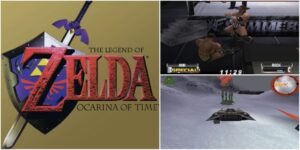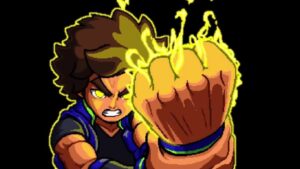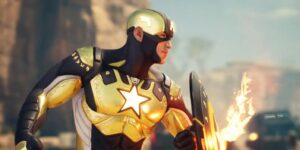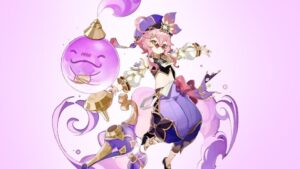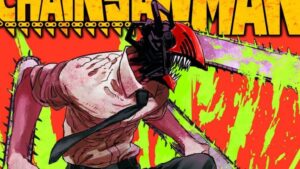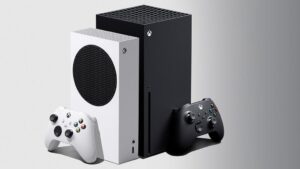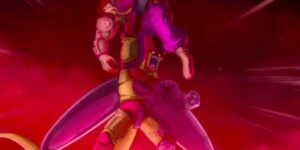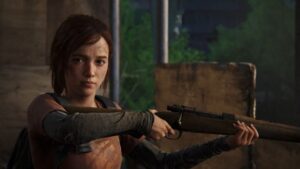The original Game Boy was seminal, and a pop culture phenomenon. It is largely thought of as the first widely popular video game handheld, discounting non-pixel-based devices like the Game & Watch and Tiger electronic games. Nintendo released a hardware revision of its hugely popular handheld several years after the original model. It had a little more RAM and incremental hardware improvements. Of course, its main new feature allowed its own selection of hundreds of games that were not playable on the original model.
•RELATED: Ten Game Boy Games Nintendo Needs to Add to Nintendo Switch Online
We are of course talking about the Nintendo DSi. But also the Game Boy Color. The GBC is the same as the DSi in the sense that it wasn’t quite a generational leap like the GBA or 3DS, and can largely be grouped together with the original model. Despite how primordial the GB and GBC were, they had games and accessories that allowed for special features, many of which are typically only associated with later generations. Some of them may surprise you.
10/10 Digital Camera Support


Before carrying a camera in your pocket was a norm, the digital revolution for photography had to happen. In the midst of this was the Game Boy Camera, a Game Boy cartridge with a camera peeking out at the top. Despite capturing only about 1% of a megapixel, the peripheral offered a range of functions making use of the photos you captured, among which were arcade-style minigames and point-and-click adventure game creation. The device was at the time the smallest digital camera, a record recognized by Guinness.
9/10 Multiple Roms On The Same Cartridge


GB and GBC cartridges contain read-only memory (rom) files representing games, but some cartridges have more than one rom. Space Invaders for example contains the entire SNES version of the game on the Game Boy cartridge, as it was manufactured with the SNES’ Super Game Boy accessory in mind. Another thing that seems hard to believe is that a version of the first Grand Theft Auto was made just for OG Game Boys, meaning you can explore Liberty City, San Andreas, and Vice City on your 1980s Tetris machine. While packaged as GBC releases, such games actually came on a “Dual-mode” cart, which featured black plastic and contained two roms, one for the GBC platform, the other for GB. Issue 31 of N64 Magazine indicates that these weren’t GBC games with which the GB was compatible, but two different versions on the same storage medium.
Sometimes the extra rom on the cartridge would not be playable but used for extra data. Super Game Boy-enhanced cartridges contained a SNES rom storing only audio or visual elements, such as a 16-bit background, or a voice sample for Pauline in the GB Donkey Kong remake (yes, she was vocalizing decades before Super Mario Odyssey). Cartridges that were ostensibly GBC-only (usually having transparent plastic) would sometimes contain a rom for the original Game Boy that merely displayed a warning notice telling the user that the game could only be played on the GBC. Today these screens are obscure curiosities.
8/10 Voices That Were Intelligible


The PS1 and N64 may have been what fully established voice acting in games outside of PC, but in fact, Nintendo’s handheld had more than 20 games that featured digitized speech. Some of these include Krusty’s Fun House, Mortal Kombat 4, Oddworld Adventures, Perfect Dark, and Pokémon Yellow. Perfect Dark had speech samples that were of particularly high quality considering the need for compression, with long lines of dialogue included. Spoken dialogue wasn’t common on the Game Boy for this reason—space was valuable—but that just makes its inclusion in games that maintained gameplay quality all the more impressive.
7/10 Motion Controls Before They Were Cool


You may be under the impression that Nintendo’s first experiment with motion controls in video games was the Wii, but the Game Boy Color hosted a predecessor. Kirby Tilt ‘n’ Tumble came out in 2001 with a unique cartridge containing accelerometers like those in the Wii Remote. Moving your GBC in turn moved Kirby around the screen like a marble. The game was another example of a borderline anachronistic mechanic to appear on the Game Boy. It wasn’t revolutionary at the time, but it was prescient.
•RELATED: Kirby’s Dream Buffet Won’t Just Be Nintendo’s Fall Guys
6/10 Play Unlimited Music


Paid streaming music subscriptions? Please. Why throw your money away when you can fit a radio to the side of your Game Boy like a helpful superfluous ear? The Boom Box Boy is an odd concept. It doesn’t use the GB’s screen, but you can play a game at the same time. It provides access to radio, but doesn’t make use of any speakers, requiring headphones. It takes power from the link port, but still needs its own battery. At least the Game Gear’s TV tuner let you get more use out of your game system’s existing features. Boom Box Boy adds a surprising function, but that functionality is limited.
5/10 Go Fishing. For Real.


In the late ‘90s, Bandai evidently took a look at the market and decided that the lack of synergy between piscine-related echolocation and Nintendo handhelds and said “That. That’s what we’re doing.” The first sonar-powered gaming accessory, the Game Boy Pocket Sonar turned your handheld into a real-life radar. Anyone of course should feel free to combine gaming and bodies of water if they so choose, but if it goes overboard, you’ve just got to accept it. Your Game Boy is gone. It’s at the bottom of the ocean.
4/10 Rumble: See How It Feels To Feel What You See


While the vibration feedback offered by what Nintendo calls Rumble has been a given in consoles’ controllers since the late ‘90s, no major handheld has offered this out of the box. Despite the fact that the GB and GBC featured no built-in vibration motor, 16 games used a Rumble Pak that was built into the cartridge itself and required a single AAA battery. Perfect Dark, Pokémon Pinball (compatible with GB), and Star Wars Episode 1: Racer were among the titles that incorporated the feature. Just another example of the Game Boy not caring that it was an ‘80s toy.
3/10 Screenshot Sharing, Sort Of


In 1998, before consoles had sophisticated sharing features, the Game Boy Printer provided a fun way to preserve moments from compatible games. Examples include Link’s Awakening DX, whose in-game camera could be used to capture images for printing, and Pokémon Trading Card Game, which supported the printing of Pokémon cards. Releasing alongside the Game Boy Camera, the accessory also served as an accessible alternative to polaroid cameras and analog photo processing. Super Mario Bros. Deluxe, Tony Hawk’s Pro Skater 2, and (you guessed it) Perfect Dark also made use of the printer.
2/10 3D Graphics. In 1992.


X, a 1992 sci-fi GB title by Argonaut Games, pushed the hardware to its limit to create rudimentary polygonal action from a first-person perspective. A black and white 3D game. How steampunk. The developer would later achieve the equally impressive feat of the graphically similar SNES Star Fox games. X later received a sequel with similar gameplay for DSiWare, X-Scape.
The year prior to X, Xanth Software had released Faceball 2000, a cartoonish corridor shooter played from a first-person perspective. While not fully 3D, it created this illusion. Also notable is that Faceball 2000 would have supported 16 simultaneous players had Nintendo allowed Xanth to execute its plan of bundling a proprietary multiplayer accessory with the game.
1/10 Online Play, The Last Place You Would Expect It


All of the features of modern gaming revolve around the Internet in some way. In contrast, online features are rarely associated with handheld consoles released in the ‘90s. The Mobile Adapter GB, released only in Japan in January 2001, flips this on its head, offering online connectivity for GBC through certain Japanese mobile phones. Once you mailed in a paper registration form contained in the package, you would be all set. Features included online multiplayer in Pokémon Crystal and additional maps and resources in Game Boy Wars 3 of the Nintendo Wars series.
A number of factors such as excessive fees prevented the adapter and the associated service from getting off the ground, but that it was available for the Game Boy at all is highly novel. The Mobile Adapter GB didn’t quite have the range of Captain Marvel’s interstellar Game Boy mod, but it was an innovation nonetheless.
•NEXT: Tomb Raider Is Running on a Game Boy Advance With a Masterful Port
- amazon prime gaming
- axie infinity
- Casino Games
- coingenius
- DualShockers Definitives
- Dualshokers
- EA Sports
- Evil Geniuses
- gameboy
- Gaming
- gaming headset
- gaming pc
- madden nfl
- Nintendo
- Online casino games
- Originals
- pc games
- plato
- plato ai
- plato data intelligence
- plato game
- plato gaming
- platodata
- platogaming
- playstation
- prime gaming
- Team SoloMid
- xbox
- zephyrnet



